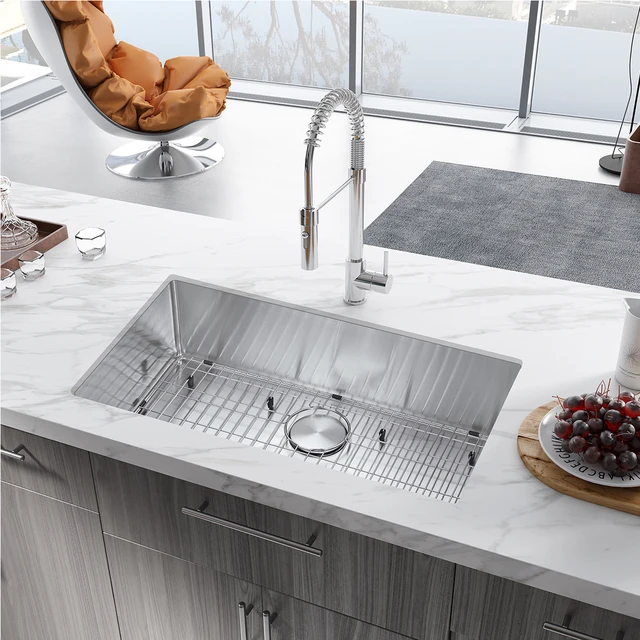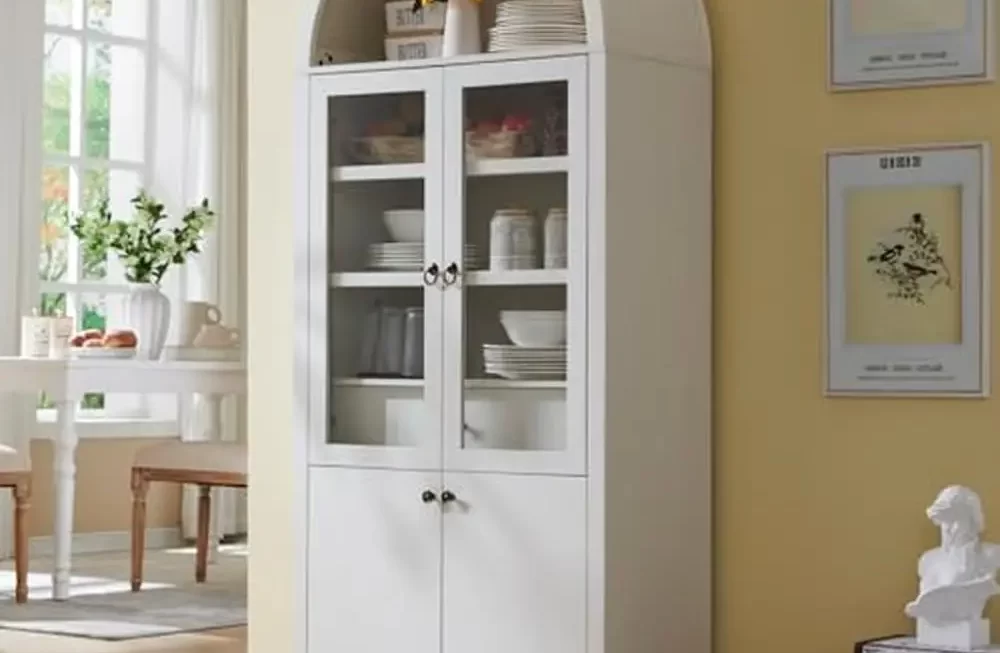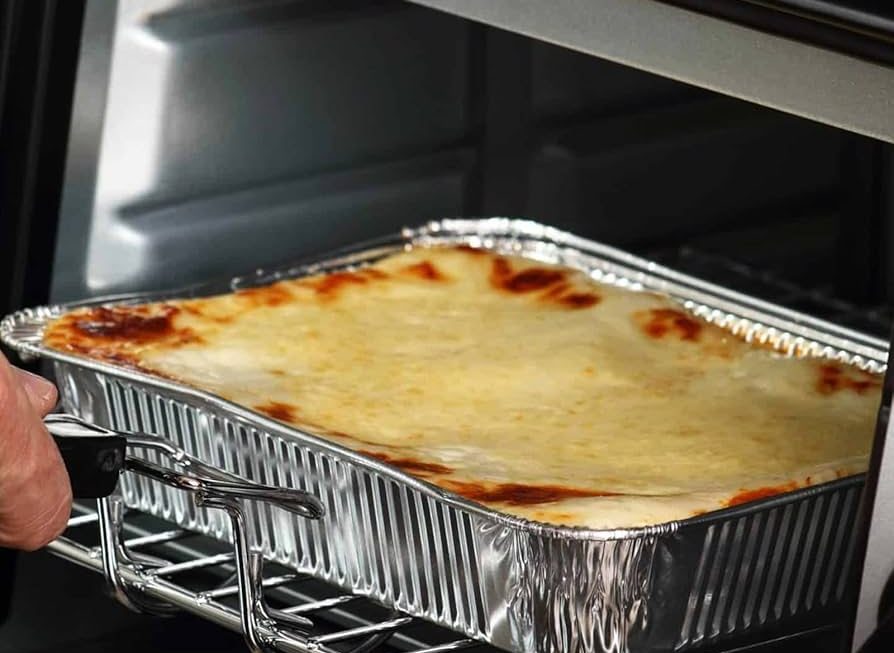 Introduction:
Introduction:
The kitchen sink is a vital component of every kitchen, serving as a hub for culinary activities, cleaning tasks, and food preparation. It provides a practical and functional workspace for washing dishes, prepping ingredients, and disposing of waste. In this comprehensive guide, we will explore the importance, types, materials, and maintenance tips for kitchen sinks. By understanding these aspects, you can make informed choices when selecting a kitchen sink that suits your needs and enhances your culinary experience.
 Importance of Kitchen Sinks
Importance of Kitchen Sinks
Cleaning Hub:
The kitchen sink is essential for washing dishes, utensils, and cookware, ensuring cleanliness and hygiene.
It acts as a central hub for cleaning and sanitizing food preparation surfaces.
Food Preparation:
The kitchen sink is used for washing and rinsing fruits, vegetables, and other ingredients during food preparation.
It offers convenience and efficiency for kitchen tasks, such as peeling, chopping, or washing food.
Waste Disposal:
The kitchen sink provides a convenient location for disposing of food waste.
It allows for the installation of garbage disposals or composting systems, promoting sustainability and reducing waste.
Types of Kitchen Sinks
Drop-In or Top-Mount:
Drop-in sinks are the most common type, resting on top of the countertop with a visible rim.
They are relatively easy to install and offer a wide variety of sizes and styles.
Undermount:
Undermount sinks are installed underneath the countertop, providing a seamless and sleek look.
They require professional installation due to the need for secure mounting.
Farmhouse or Apron-Front:
Farmhouse sinks have a distinctive exposed front panel that extends beyond the edge of the countertop.
They add a touch of rustic charm and character to the kitchen.
 Materials Used in Kitchen Sinks
Materials Used in Kitchen Sinks
Stainless Steel:
Stainless steel is a popular choice for kitchen sinks due to its durability, easy maintenance, and resistance to stains and corrosion.
It offers a sleek and modern look that complements various kitchen styles.
Composite:
Composite sinks are made from a mixture of resin and various materials, such as granite or quartz.
They provide a durable and heat-resistant option with a wide range of colors and finishes.
Fireclay:
Fireclay sinks are crafted from clay that is heated at high temperatures, resulting in a hard and durable finish.
They offer a classic and elegant appearance, ideal for traditional or farmhouse-style kitchens.
Some common colors available for kitchen sinks:
When it comes to kitchen sink colors, there are several options to choose from. Here are some common colors available for kitchen sinks:
-
Stainless Steel:
- Stainless steel sinks are a popular choice for their modern and sleek appearance. They have a metallic silver color that complements various kitchen designs and color schemes. Stainless steel sinks also offer durability and are resistant to stains and corrosion.
-
White:
- White sinks have a classic and timeless appeal. They can create a clean and bright look in the kitchen, especially when paired with white or light-colored countertops. White sinks are available in different materials such as porcelain, fireclay, or composite.
-
Black:
- Black sinks can add a dramatic and contemporary element to the kitchen. They create a bold contrast and can be a focal point in a light-colored or modern kitchen design. Black sinks are commonly made from materials like granite composite or stainless steel with a black coating.
-
Metallic Finishes:
-
Some kitchen sinks are available in metallic finishes like copper, brass, or bronze. These finishes can add a unique and stylish touch to the kitchen. Metallic sinks can create a warm and inviting ambiance and work well with traditional or industrial design styles.
-
Beige/Brown:
Beige or brown-colored sinks can complement earthy or rustic kitchen designs. They add warmth and a natural element to the space. These sinks are often made from materials like granite, composite, or fireclay.
Colored Composite:
Composite sinks are available in various colors, offering a wide range of choices to match or complement the kitchen decor. Colors like gray, beige, brown, or even bold shades like red or blue can be found in composite sink options.
These are just a few examples of kitchen sink colors available in the market. The choice of color ultimately depends on personal preferences, the desired aesthetic, and how well it fits into the overall kitchen design.
 Here are some suggestions for coordinating kitchen faucets and sink combinations:
Here are some suggestions for coordinating kitchen faucets and sink combinations:
When it comes to pairing a kitchen faucet with a kitchen sink, there are several factors to consider, such as functionality, style, and compatibility. Here are some suggestions for coordinating kitchen faucets and sink combinations:
Sink and Faucet Size:
Ensure that the size of the faucet and the sink are proportionate to each other. A large sink may visually overwhelm a small or delicate faucet, while a small sink may not accommodate a large, high-arc faucet. Select a faucet that corresponds to the size and depth of the sink for a balanced and functional pairing.
Mounting Options:
Determine the mounting options available for both the sink and faucet. Common sink mounting options include top-mount, undermount, and farmhouse-style sinks. Similarly, faucets can be mounted on the sink deck or on the wall. It is important to choose a faucet that is compatible with the specific mounting style of your sink for proper installation and functionality.
Style and Design:
Consider the overall style and design theme of your kitchen when selecting the faucet and sink combination. Choose a faucet and sink that complement each other in terms of finish, shape, and design. For example, a sleek and modern sink may pair well with a contemporary faucet, while a farmhouse sink may be enhanced by a traditional or rustic style faucet.
Functionality and Features:
Take into account the functionality and features that you desire in a faucet. Decide whether you prefer a single-handle or double-handle faucet, a pull-out or pull-down sprayer, or additional features like a built-in soap dispenser or filtration system. Ensure that the faucet you choose offers the desired features and fits your specific kitchen needs.
Finish Coordination:
Coordinate the finish of the faucet with other hardware and fixtures in the kitchen, such as cabinet handles, lighting fixtures, and appliances. Popular finishes include chrome, stainless steel, brushed nickel, and oil-rubbed bronze. Consider the overall color scheme and style of your kitchen to create a cohesive and visually appealing look.
Remember to choose a faucet and sink combination that not only looks aesthetically pleasing but also fulfills your functional needs in the kitchen. Take measurements, consider the mounting options, match the style and finish, and ensure compatibility for a successful and harmonious pairing.
Maintenance Tips for Kitchen Sinks
Regular Cleaning:
Clean the sink regularly with mild soap or a non-abrasive cleaning solution to remove stains and maintain its appearance.
Rinse thoroughly and dry the sink after each use to prevent water spots and mineral deposits.
Avoid Harsh Chemicals:
Avoid using harsh abrasives or acidic cleaners that can damage the sink’s surface or finish.
Opt for gentle cleaning agents and non-scratch scrub pads for routine maintenance.
Preventing Scratches:
Use cutting boards, trivets, or sink grids to protect the sink from scratches caused by sharp utensils or heavy cookware.
Be cautious when handling metal utensils or heavy objects in the sink to avoid accidental damage.
 Conclusion:
Conclusion:
The kitchen sink plays a crucial role in culinary activities, cleanliness, and waste disposal in the kitchen. By understanding the importance, types, materials, and maintenance tips for kitchen sinks, you can choose a sink that complements your kitchen decor and meets your functional needs. A well-chosen and properly maintained kitchen sink will serve as the heart of your culinary haven, providing a practical, hygienic, and aesthetically pleasing workspace. Invest in a high-quality kitchen sink to create a functional and stylish kitchen that enhances your cooking and cleaning experience.



